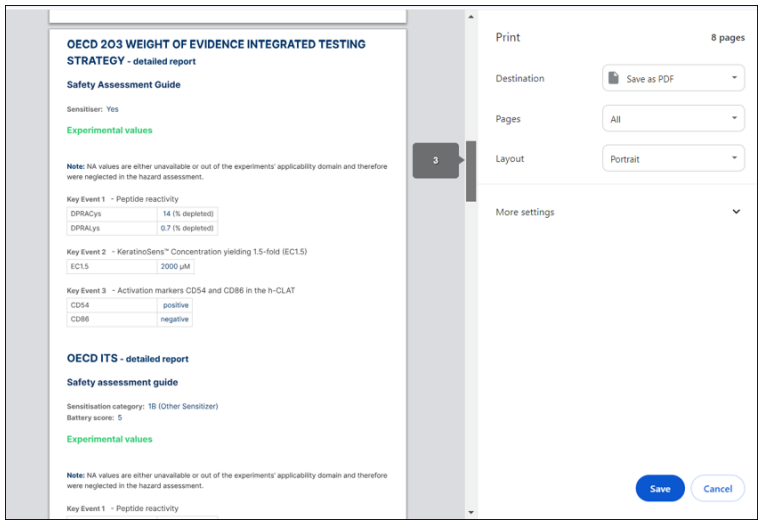SaferSkin™ report Tutorial
A summary of report is presented at first which includes the binary classification (sensitizer/not a sensitiser) for OECD DA 2o3 and the three-tier GHS potency classification (1A, 1B and not a sensitiser) for ITS, as well as the four-tier potency classification (not a sensitizer, weak sensitiser, moderate sensitiser, or strong sensitiser) available for Multiple regression, Neural network, and Bayesian network approaches.
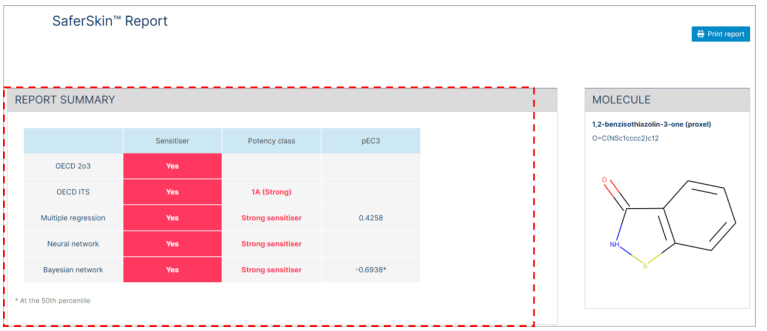
Following the summary report, a detailed report for each approach is presented. Each detailed report is composed of "Safety assessment guide" (e.g., sensitisation category, EC3, pEC3), "Input parameters" (experimental values, molecular descriptors, in silico prediction), and "Calculated values" section generated for the Bayesian network approaches.
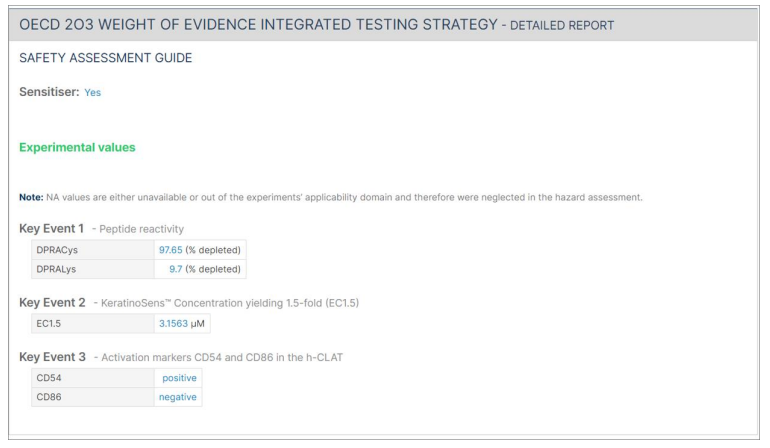
The OECD ITS detailed report also includes a display of the battery score.
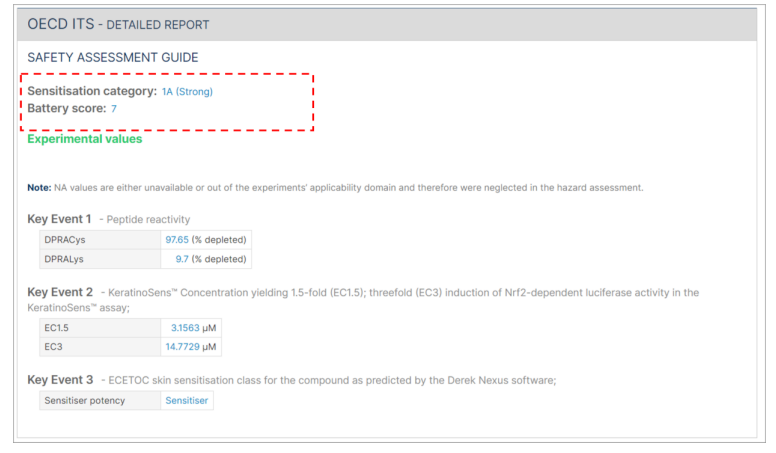
The Multiple regression detailed report includes the pEC3 result and the sensitisation category. The sensitisation category (1 = Not a sensitiser, 2 = weak sensitiser, 3 = moderate sensitiser, or 4 = strong sensitiser) is derived from the pEC3.
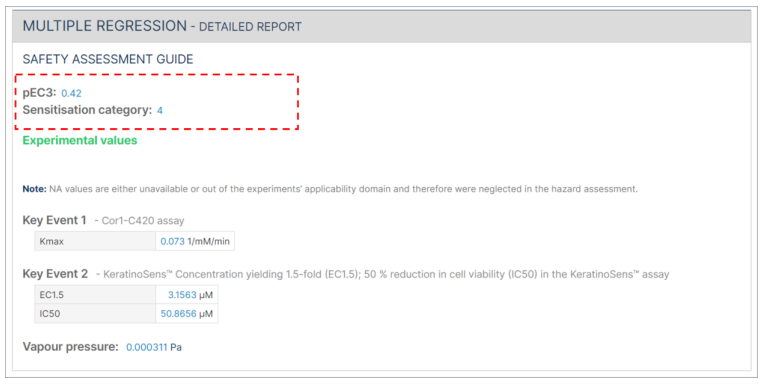
In cases where not all required information is submitted, the safety assessment will indicate "NA" instead of providing a pEC3 value.
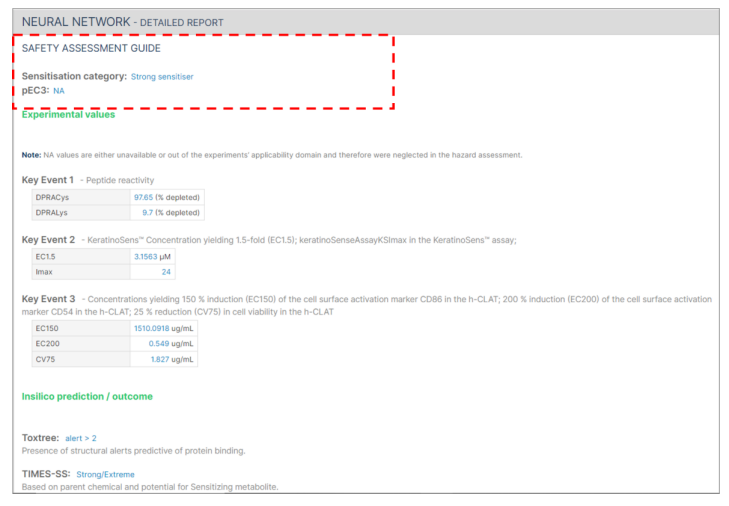
The "Safety Assessment Guide" for the Bayesian network detailed report includes the EC3 and pEC3 at all the percentiles (50th, 60th, 70th, 80th and 90th). A potency probability distribution based on exploring the 50th - 90th percentiles of the pEC3 for the molecule is generated.
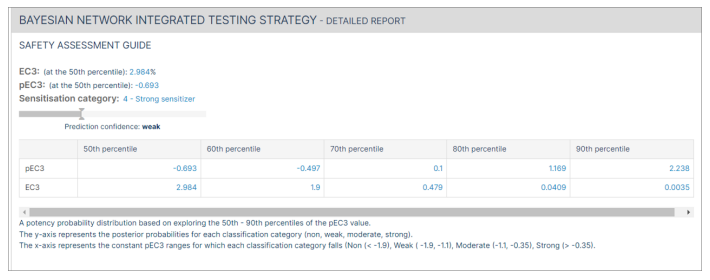
The "Calculated values" section is specific to the Bayesian network model, which includes:
- Prior Probabilities: The prior probabilities are always: Non= 0.2653, weak= 0.2653, moderate= 0.2721, Strong= 0.1973 (as calculated from Jaworska et al. 20157 )
- Posterior probabilities: The calculated posterior probabilities may change with each molecule prediction.
- Michael acceptor correction: In the instance where a compound is designated as a Michael acceptor, the posterior probabilities are adjusted to account for the anti-inflammatory properties of the compound.
- The Bayes factor is an indication of the strength of evidence for accepting the prediction. It quantifies the uncertainty to aid in decision-making.
- The compound is classified based on the category with the highest Bayes factor. The larger the Bayes factor, the stronger the evidence to support a prediction. <1 = Negative (evidence supports an alternative); 1–3 = Weak; 3–30 = Substantial; >30 = Strong.
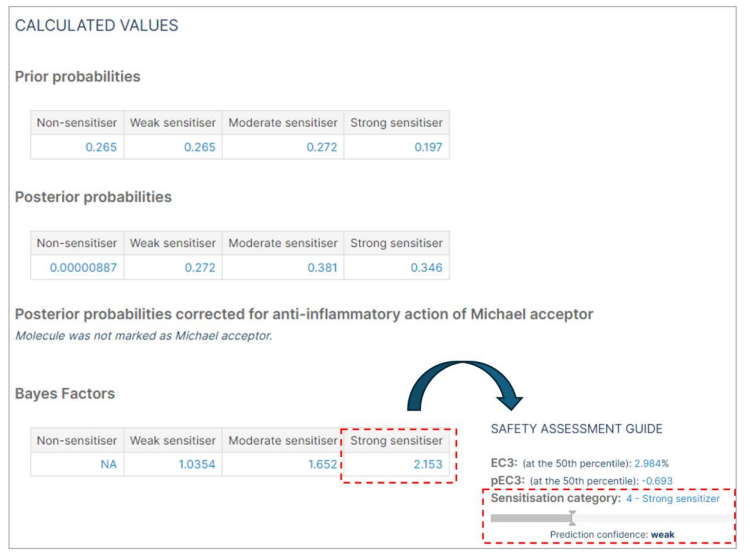
Printing/Saving Report
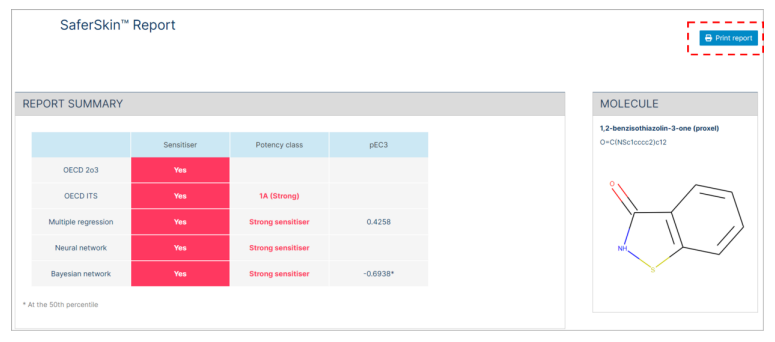
When you click the "Print Report" button, the result report will be generated and can be saved as a PDF or printed.
